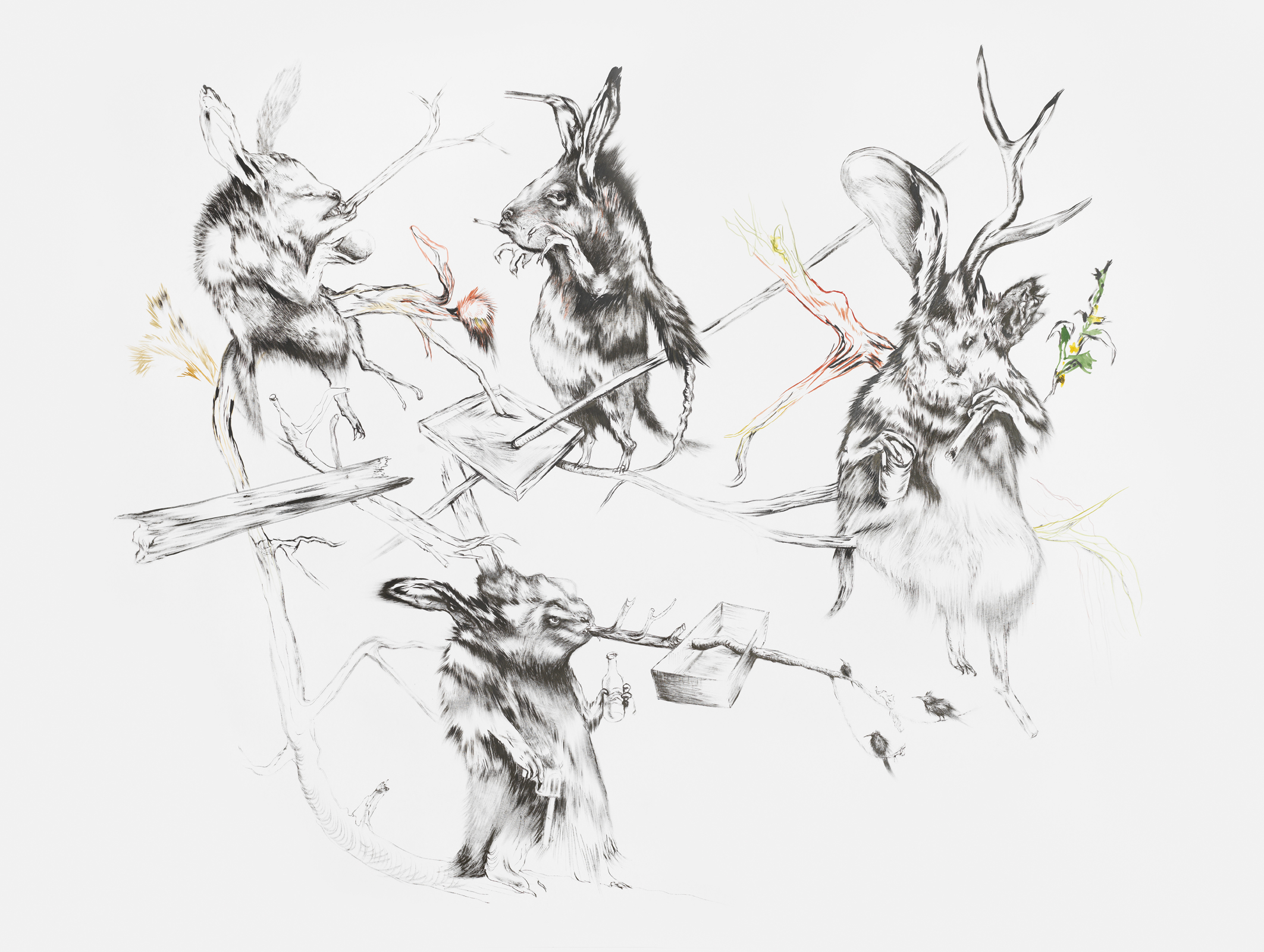Stavanger Art Museum recently opened an exhibition showing the extensive oeuvre of artist Per Dybvig. Dybvig is an artist known for his illustrations and contributions to childrens’ books, such as Svein and His Rat by Marit Nicolaysen. Often humorous, satirical and with a somewhat black mood, these drawings are compelling to children and adults alike. Titled Look What the Bird Found, the exhibition at the Kunstmuseum offers an excellent insight into his career and diversity as an artist. Dybvig’s strongest assets are also highlighted in this collection of works, as some pieces prove to be a more piercing experience than others. The show is curated by museum Director Hanne Beate Ueland and Maiken Winum.
The exhibition presents works of various media including film, sculpture and drawing, with the latter being most prominent in this show. Large-scale drawings and smaller illustrations placed together in series are displayed throughout the exhibition area and also represent the primary medium in Dybvig’s practice. The drawings and illustrations in the large hall, turning left when entering the space, are primarily of animals carrying personified with human characteristics. There is also a piece that includes a small, old-fashioned TV with projected audio of a man’s voice. This voice is very loud and makes an impact on the viewer’s experience of the entire exhibition area. Whether this is intentional or not, it does make a rather disturbing effect. The sound interferes with the experience of viewing other artworks in the space and imputes an unnecessary layer onto the works. Apart from this, there are several artworks in this area that present intriguing stories, scenes and personalities.
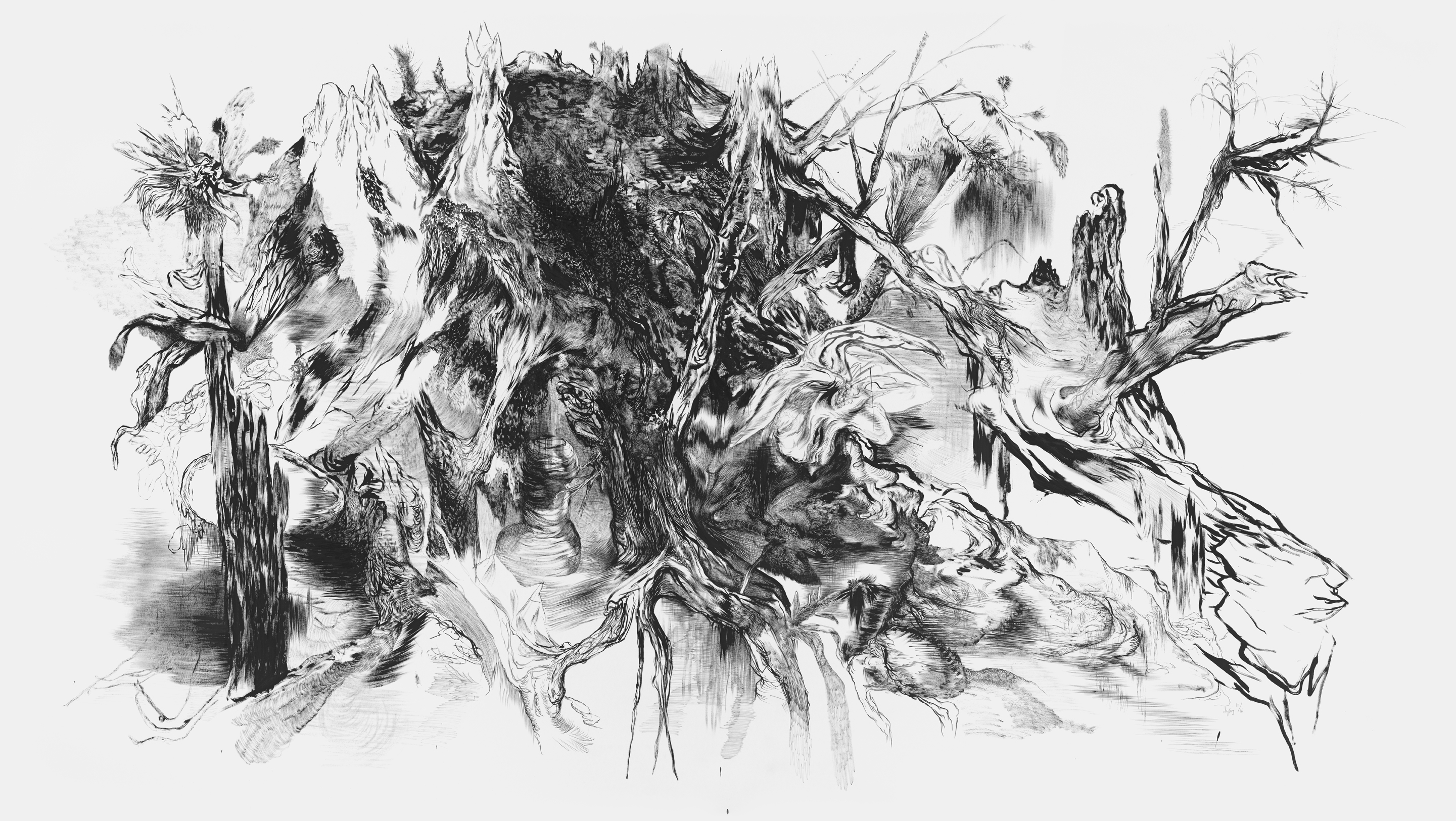
Dybvig has an invigorating ability to portray characters, human and animal, with intention and soul. His figures are never perfect or idealized. Animals such as rabbits, hedgehogs and mice do not retain many cute, pet-like qualities, but are rather sinister and mystical creatures in the world of Dybvig. Often partaking in inexplicable actions, the situations and scenes he portrays seem to be of a kind of underworld of the imagination. Although many of these drawings feel otherworldly and fantastical, the creatures maintain certain recognizable human qualities. Emotions such as suspicion, jealousy, conspiracy and trust are explored in the facial expressions and actions of the animals. They appear at first to be distant fantasy-creatures, but upon recognition by the viewer of how they correspond with our true nature, they suddenly feel much closer. This sense of intimacy also comes forth in elements such as a few pinecones and nuts on the marble floor, and some drawings extended onto the wall and floor in the actual exhibition space. Although the works often have a fun and entertaining appeal, they contain a deep sense of somberness. The dream-like landscapes and creatures feel at times like an exploration of the human subconscious in which the darker side of human nature comes to the forefront. Our waking, intellectual capacity allows for a superior feeling towards other creatures in nature and can make it difficult to accept some of our destructive inclinations. Several of Dybvig’s drawings seem concern themselves with these topics by various degrees of severity and humor.
The Kempinski Suite (2005) is one example of how Dybvig explores lighter elements of personalities while simultaneously examining a more complex side of human nature. The work is a series of small drawings of different characters. Each drawing features a single person, and the figures are seemingly unrelated other than the means by which they are drawn. They inhabit their own sheet of paper with their own, individual characteristics and personalities. In this manner, the drawings feel more like a portrayal of satirical characteristics rather than real-life people. Dybvig has a great ability to draw out characteristics and put these front and center, rather than attempting to give a full and well-rounded portrayal of someone. These drawings are reminiscent of Dybvig’s book illustrations (which is how I felt about several of the best works in this show) – understated and charming.
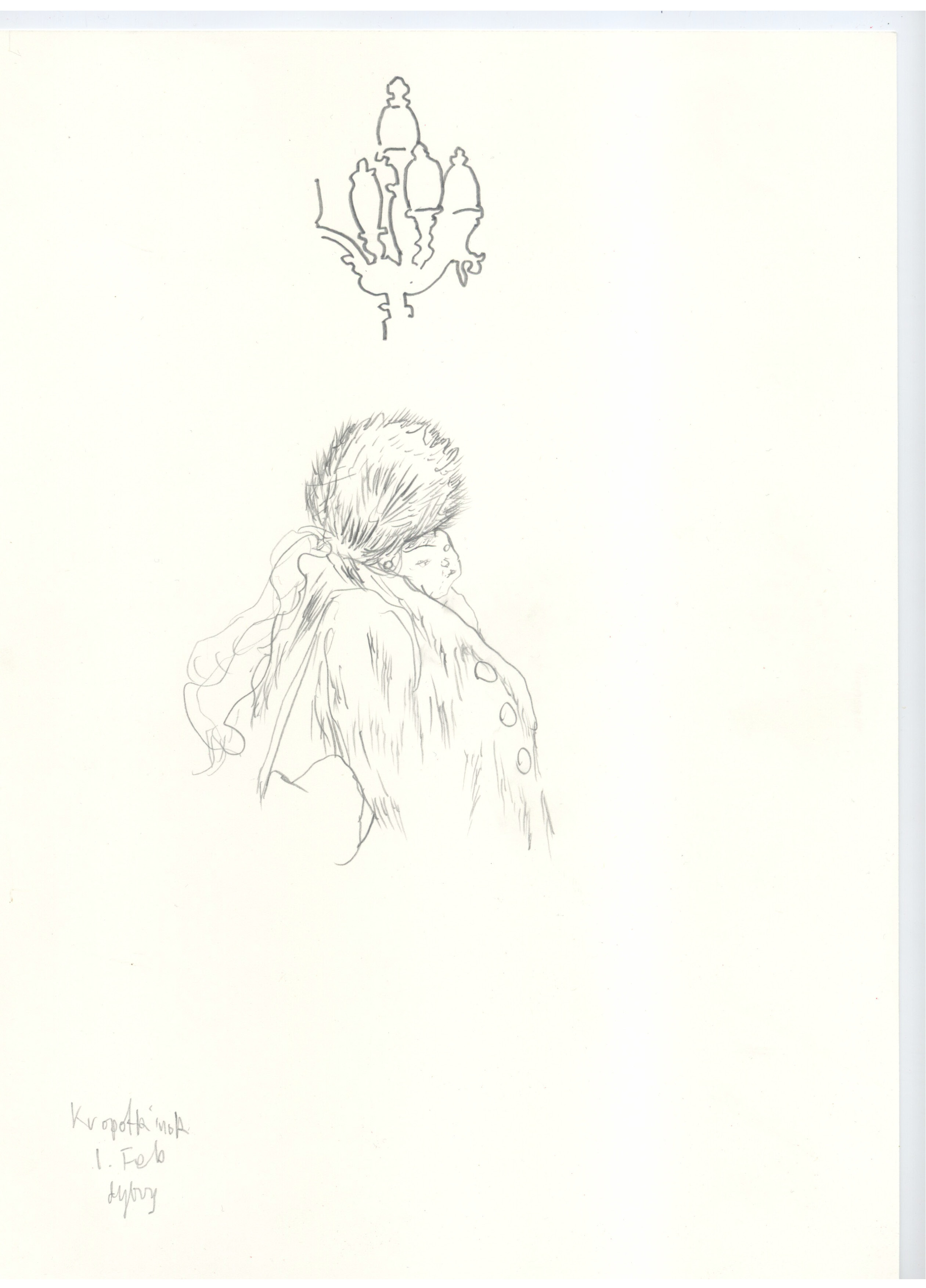
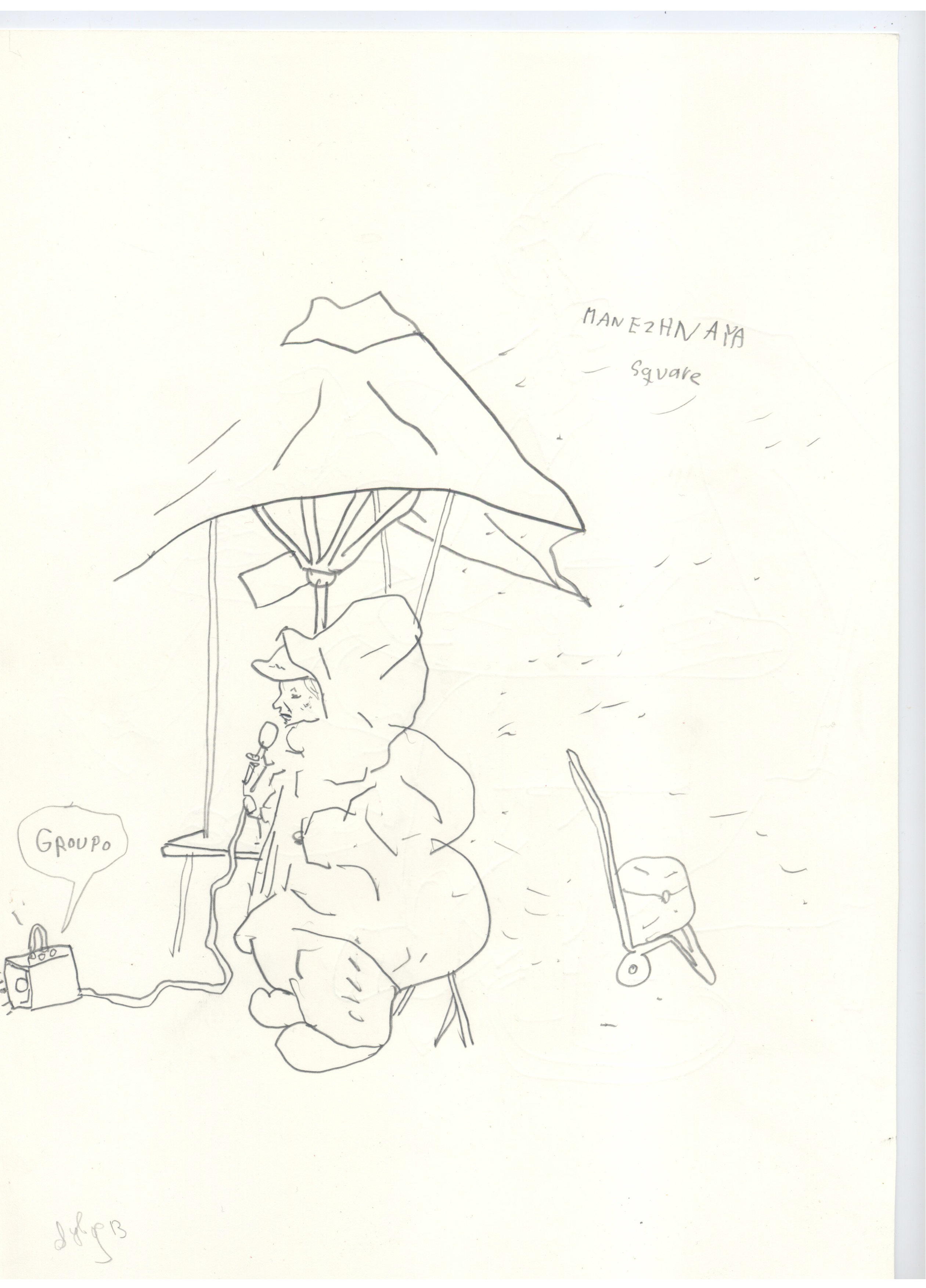
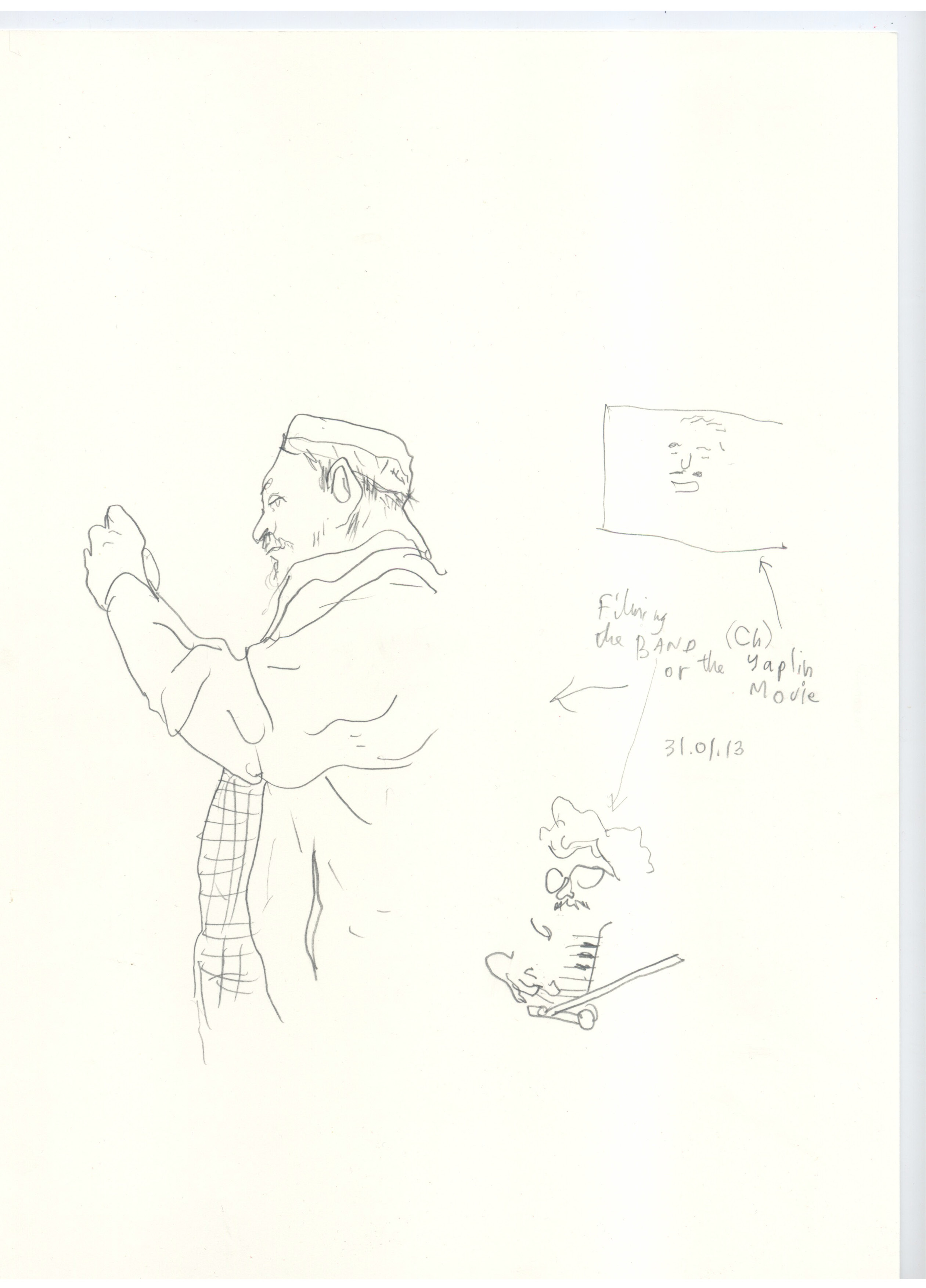
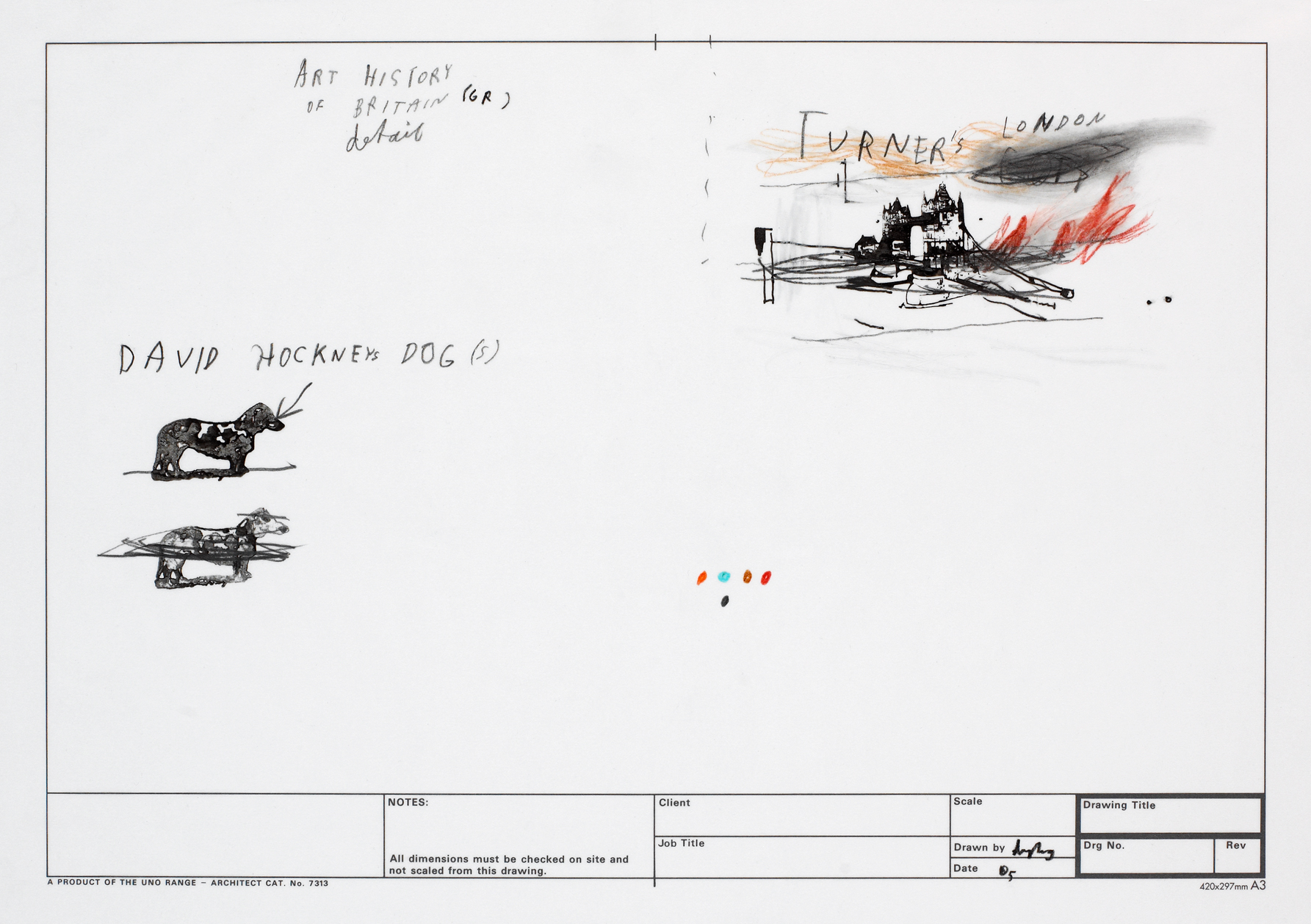
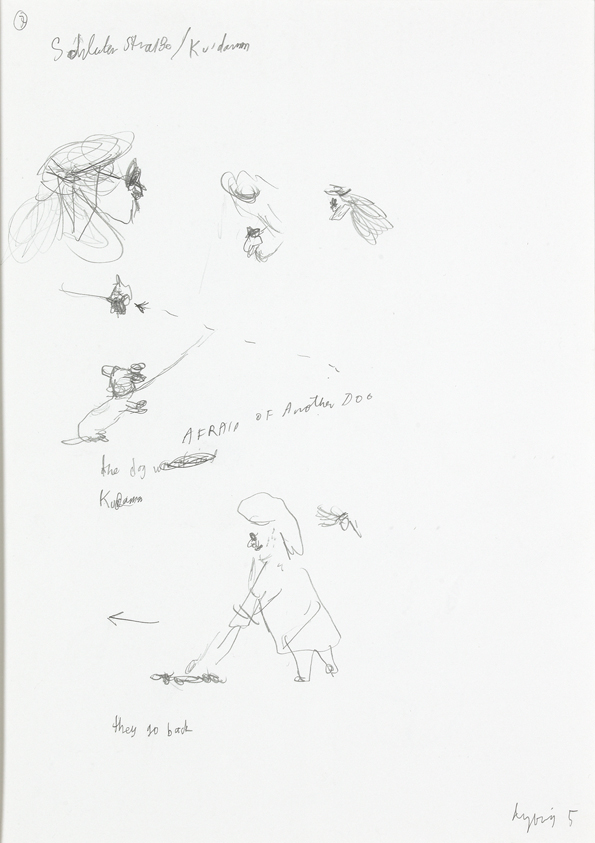
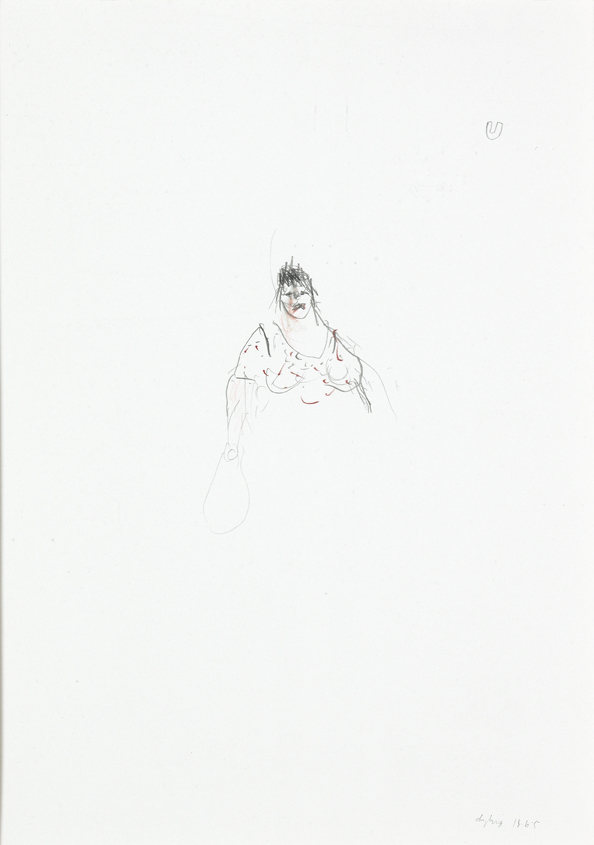
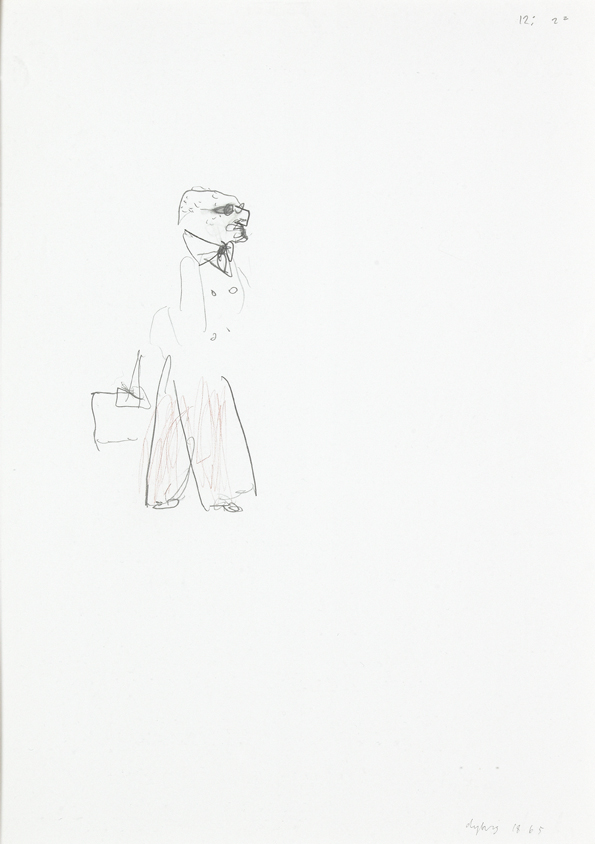
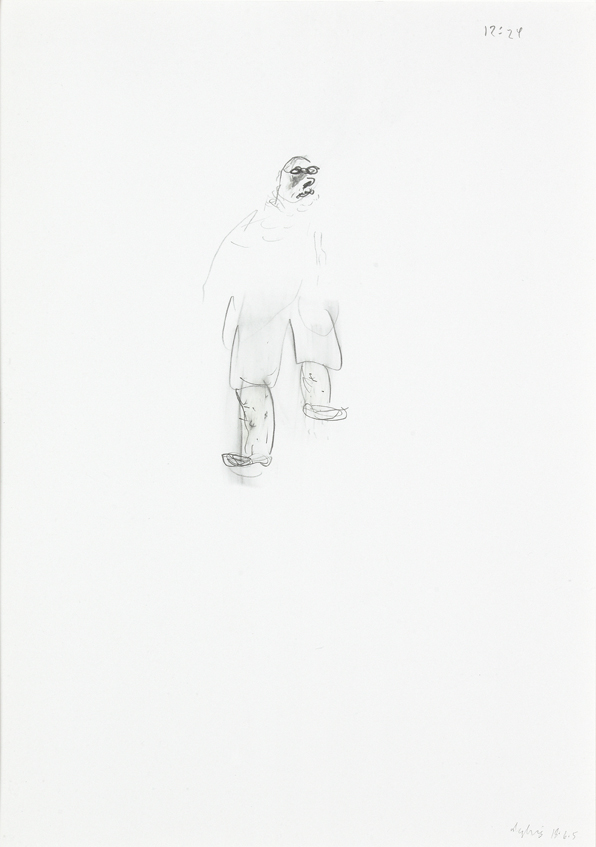
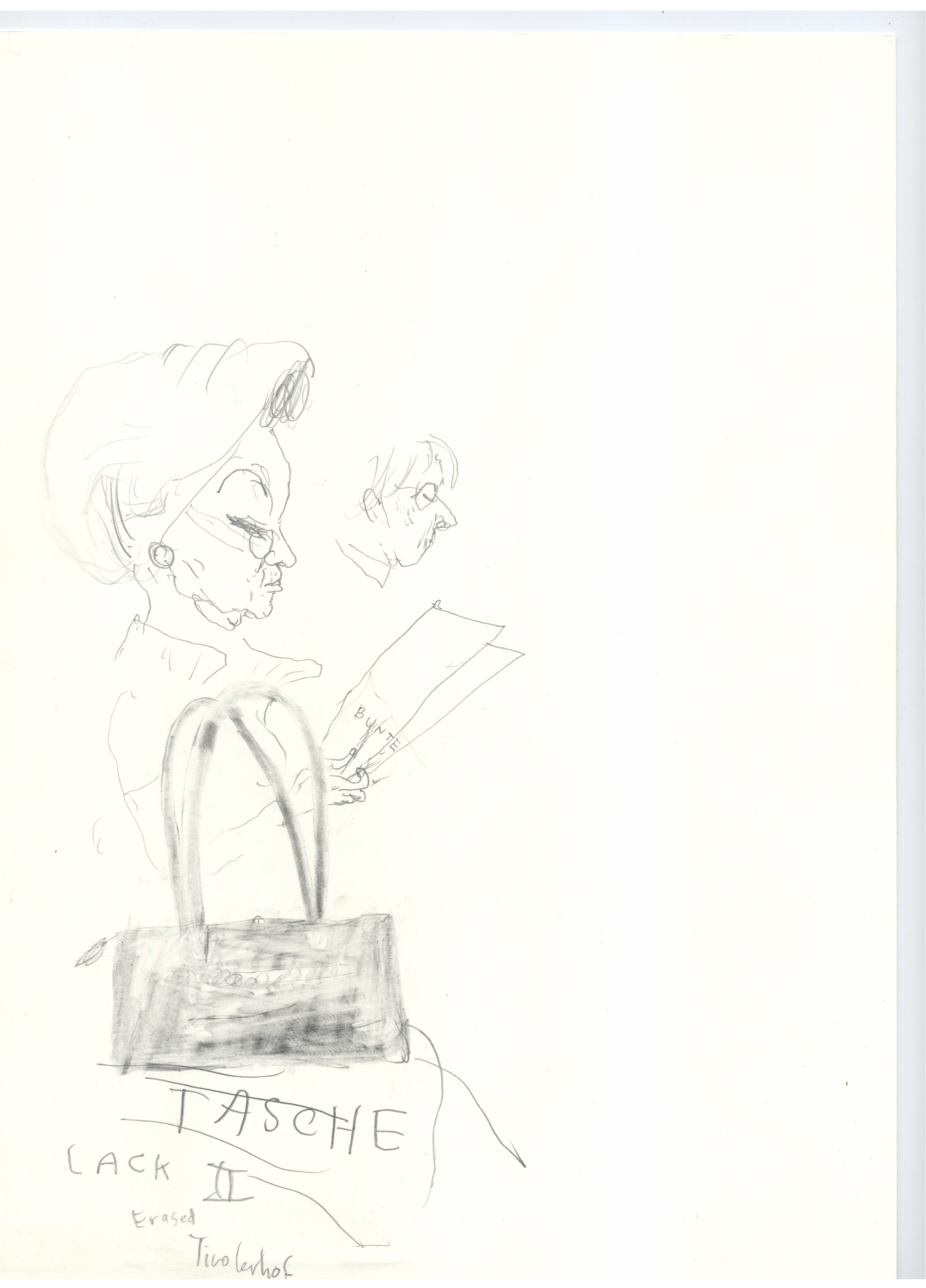
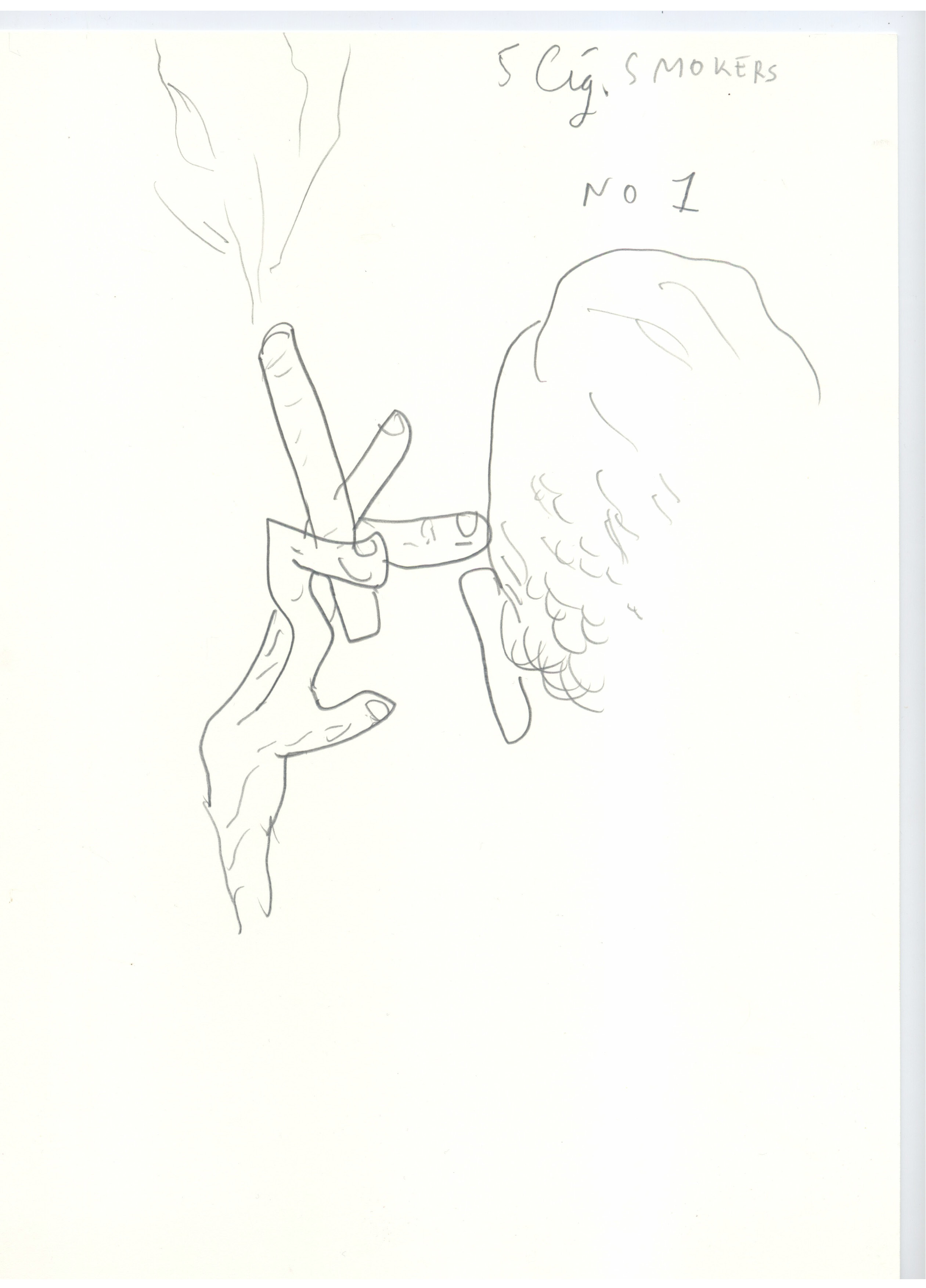
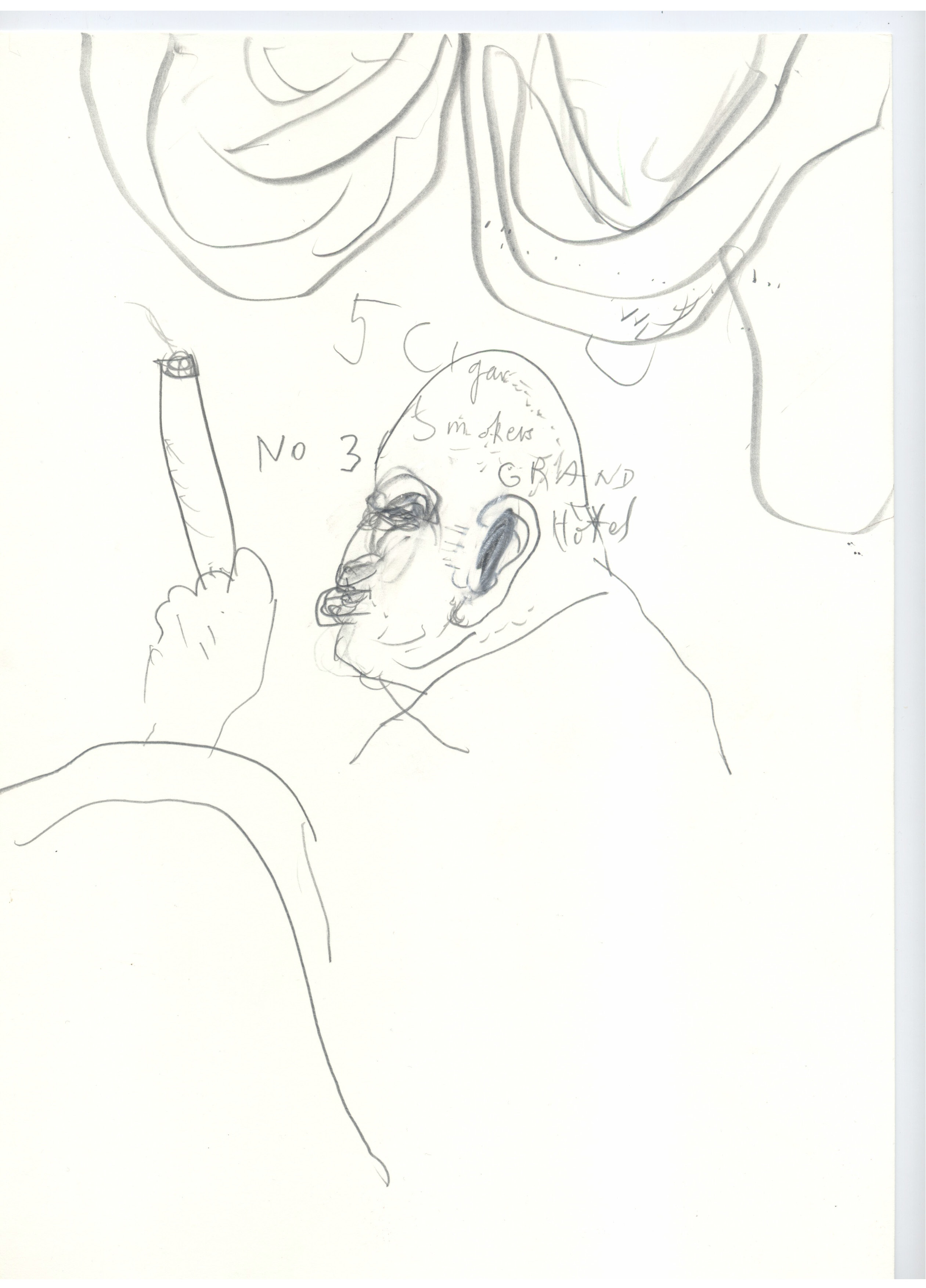
London Suite (2005) is another piece hanging close by. Also a series of intimate, almost child-like drawings on paper, this work creates a contrast between the infantile drawing style and the words and suggestions that are being made within the drawings. At first glance these drawings appear as if haphazardly made by a young child. Upon closer inspection, they are more reminiscent of post-modern abstract paintings, reproduced as drawings. They are also peppered with words and references from the professional art world and art business. The work itself is a comment on how seriously the art world takes itself. The artist appears to not hold much respect for the professionalized art world and rather pushes a more playful attitude towards art. Like the aforementioned artwork, it still contains warmth and closeness in its satire.
Continuing through the exhibition, the area up the stairs consists of three additional rooms. These rooms are all smaller in size with fewer pieces on display than the large hall. The room to the left presents drawings and an installation with a small table and a chair. Some of the drawings are almost cartoon-like and are presented as series. In these drawings, Dybvig plays around with caricature-like people engaging in everyday, mundane activities. The Moscow Drawing Book (2013) and The Vienna Drawing Book (2010) are series of small to medium sized drawings on paper. These works offer a funny and serious presentation of grown-up-life. Different situations such as dating, work-related scenarios and cigarette breaks are explored in these series of drawings. It feels almost like we are viewing adult life through the lenses of a child who is to describe what he or she would perceive as ‘typically grown-up’. A little bit self-important and extremely ordinary, these scenes are relatable to all. Everyday situations that would hold importance to an adult, for example a meeting or phone call, are presented with a deflated sense of importance and with an overview perspective in which such small details drown in an exhaustive list of other, similar activities. The humor in these drawings is not simply directed at the mundane, but rather at the seemingly lack of (self) awareness of these characters. Although satirical and often unflattering, these works do not read as condescending or overly critical but rather like un-idealized observations. Dybvig seems to feel some tenderness for his subjects. As previously mentioned, there is warmth in much of his satire. Zwei Männer II (2006) is another example in the same room that is centered around similar ideas. These drawings are much larger and feel almost like stills from an ironic documentary in which the intention has been replaced and full concentration is given to seemingly insignificant details. Communication in the grown-up world is a common thread in this room, and is explored in the latter piece as it occurs between people in a conversation, through technology and as announcements such as train times. The structure of a day is disseminated and centered on designated times to take the train or have a meal. The real meaning of what these characters actually do and how they spend their days aside from catching phone calls and trains and meals, is not clear. Or perhaps it is not of interest?
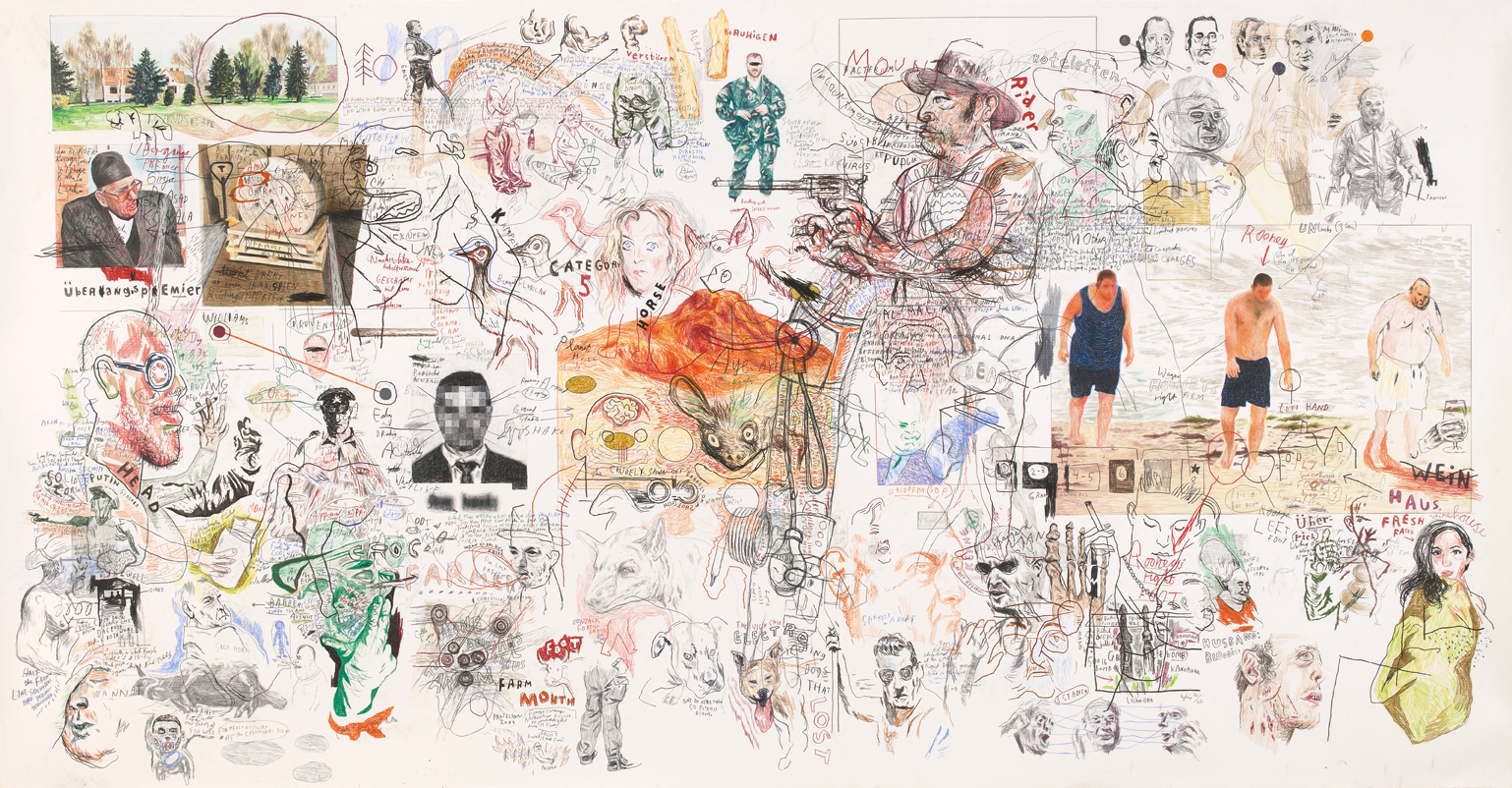
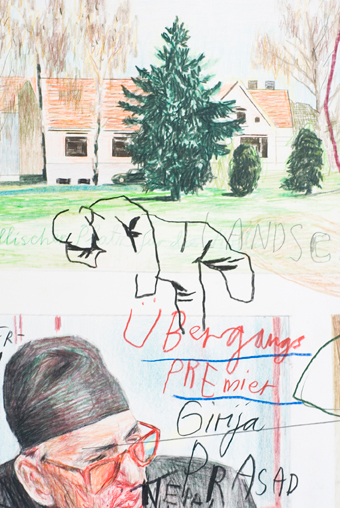
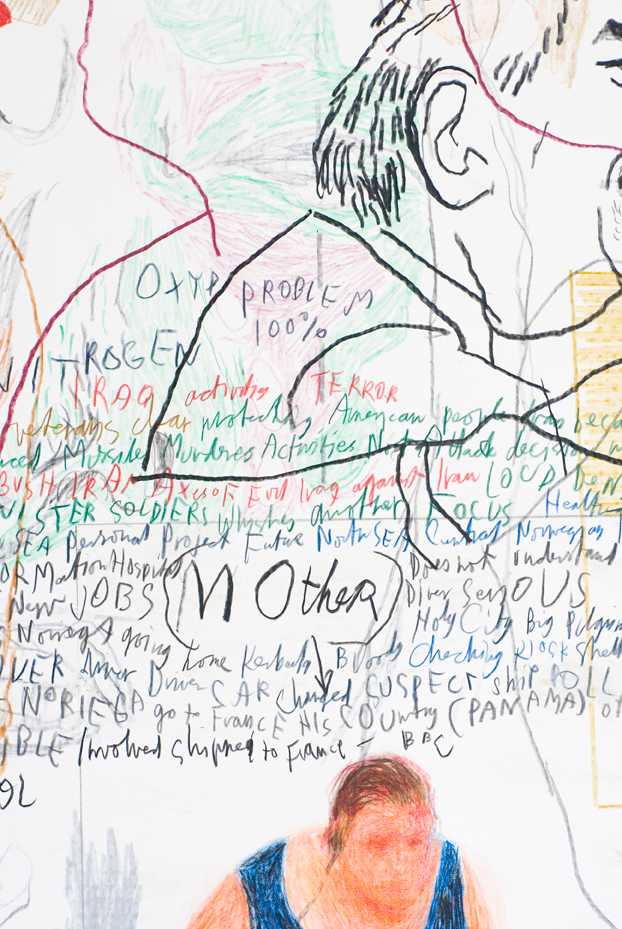
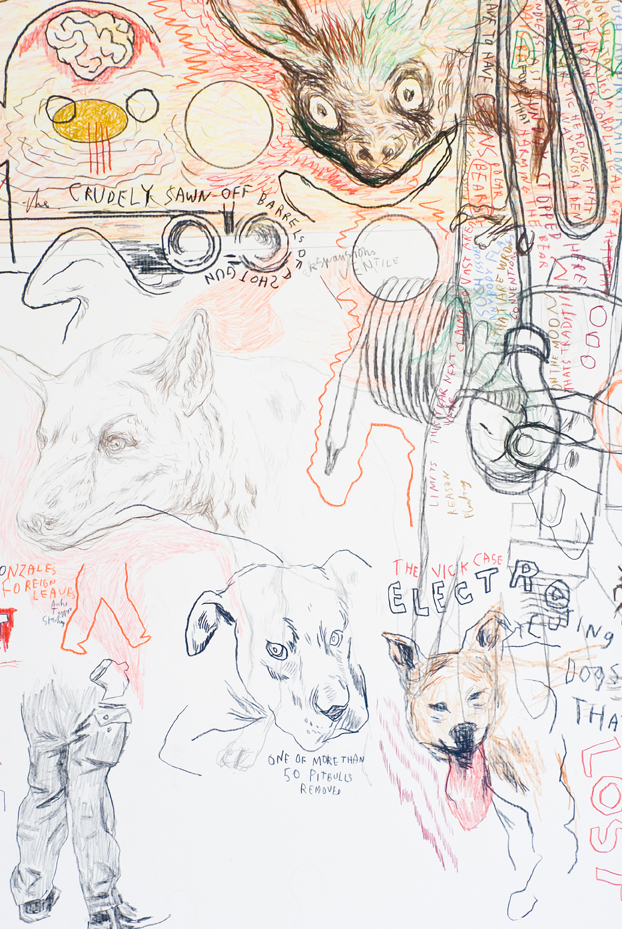
There is a long wall that connects this room with another. Along this wall is a series of drawings called Bronx Zoo Birds and Smokers – Suite (2008) presented in one long line. As the other series of similar drawings are typically presented in a rectangular shape with rows and columns, the reference to cartoons feel much more insistent. In this case, the presentation of the drawings rather accentuates the repetitive topic. It feels less like a story being told, and more like examining the odd similarities between birds and smokers with a magnifying glass. Depicted with thin, delicate lines on small areas on the paper, the drawings force the viewer into a closer inspection of the work. This element allows for an intimacy that is reminiscent of examining the illustrations in books. It feels like an understatement, but it strengthens the sense of curiosity and suspense I feel as a viewer of these scenes. Had the drawings been depicted large, the sense of voyeurism and intricacy may have been lost. Now they make me feel as though I am actually walking around inside the Bronx Zoo, secretly observing certain types of people (smokers) as well as the animals and entertaining myself with how they resemble one another.
In one of the other rooms upstairs hangs the I’m Counting on You Potato Head (2006 – 07). It is made with colored pencil on paper and almost covers the entirety of the wall. The drawing shows people and creatures in various settings and formats. They are primarily engaging in various areas of adult life. Work, the human body, violence and intellect are explored and presented in a funny, satirical, dark and frightening manner. This piece lives up to its size quite well, and avoids feeling watered down as some of Dybvig’s other larger pieces tend to do.
The composition of this exhibition, in which the curators have included a wide range of works by Dybvig, is reminiscent of a retrospective. The pieces vary greatly in terms of how well they add to the exhibition as a whole, but Stavanger Art Museum offers a wonderful and well-rounded opportunity to experience the multifaceted practice of Dybvig.


